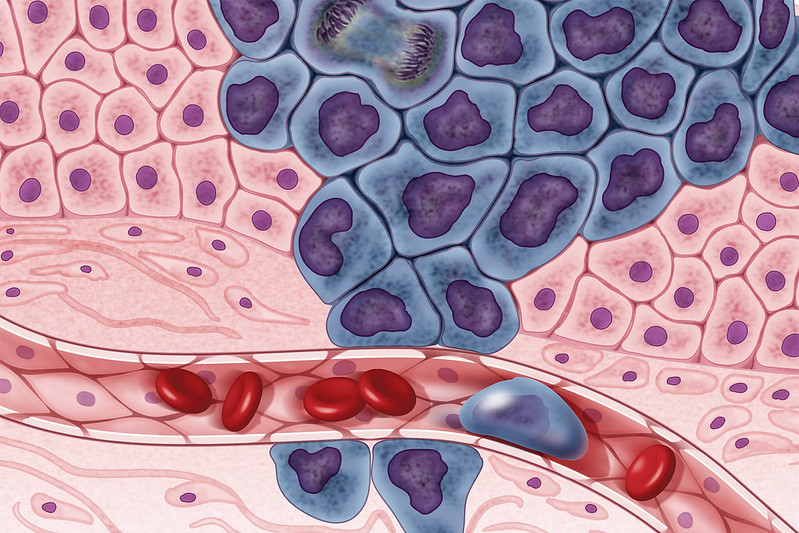Researchers have found over 5,000 genetic variants that dramatically accelerate the growth of different kinds of cancer in a ground-breaking study. In addition to identifying high-risk genetic variations, this study raises the possibility of new pharmacological targets for the successful treatment of certain cancer types. Prominent scientists from the University of Cambridge, the Wellcome Sanger Institute, and the Institute of Cancer Research carried out the study. They discovered the critical significance that mutations pertaining to the BAP1 “tumor defence” gene play in the genesis of cancer.
Principal Results of the Research
More than one-fifth of the BAP1 gene variants found in the study were found to be pathogenic, which means they significantly raise the risk of malignancies in the kidney, brain, skin, eye, and lung lining. These results, which were published in the esteemed journal Nature Genetics, offer insightful information that can help medical professionals diagnose patients and choose the best courses of action. Importantly, in order to guarantee that the advantages of these discoveries are broadly transferable, this research also emphasizes the necessity of including people from other ethnic backgrounds who are typically underrepresented in genetic research.
BAP1 Gene and Risk of Cancer
Known as the body’s “tumor defense” mechanisms, the BAP1 gene is essential to the body’s natural defense against malignancies. This gene is necessary to keep cells healthy and stop them from growing uncontrollably, which can result in the development of tumors. On the other hand, new findings indicate that some disruptive variations of the BAP1 gene can greatly raise the chance of getting different kinds of cancer.

Knowledge of BAP1 Gene Variants
Changes or mutations that affect the BAP1 gene’s normal function are known as disruptive variations. These variations may result in a diminished capacity of the gene to inhibit tumor growth, thereby heightening an individual’s vulnerability to cancer. Researchers have found that the hormone Insulin-like Growth Factor 1 (IGF-1), which is essential for cell growth and development, is raised in response to these disruptive variations.
IGF-1 promotes cell growth, proliferation, and survival since it functions as both a hormone and a growth factor. Under normal conditions, IGF-1 plays a role in a number of physiological processes, such as juvenile growth and development and adult tissue maintenance. On the other hand, aberrantly high IGF-1 levels have the potential to accelerate the onset and spread of cancer.
The Relationship Between Cancer and IGF-1
Increased levels of IGF-1 have been linked to multiple cancer types, such as colorectal, lung, prostate, and breast cancers. The hormone plays a crucial role in the formation of tumors because it encourages the survival and division of cancer cells. Disruptive BAP1 mutations have been linked to elevated IGF-1 levels, which implies that these genetic alterations may foster the growth of cancer.

The fact that this relationship creates new therapy options for cancer makes it very important. Through comprehending the function of IGF-1 in the advancement of cancer, scientists can create tailored treatments that exclusively impede this hormone. IGF-1 inhibitors may be able to stop or even delay the spread of malignancies linked to elevated IGF-1 levels. This strategy could lead to better patient outcomes and is indicative of a promising new class of cancer therapies.
Possibility of IGF-1 Inhibitors as Treatments for Cancer
An interesting breakthrough in oncology is the potential of IGF-1 inhibitors as a novel class of cancer treatments. These inhibitors function by preventing IGF-1 from acting, which lessens its capacity to encourage the development and survival of cancer cells. IGF-1 inhibitors are currently being tested in clinical trials to see if they work well in treating different cancer types.
IGF-1 inhibitors have a lot of potential applications, one of which is to supplement current cancer therapies. IGF-1 inhibitors, for instance, could be used to increase the efficacy of radiation or chemotherapy. Combination therapy may offer a more all-encompassing strategy to treatment by focusing on several pathways implicated in the genesis of cancer.
Furthermore, people with malignancies that are resistant to conventional treatments may benefit especially from IGF-1 inhibitors. These inhibitors may provide patients who do not respond well to conventional medicines an alternate course of treatment because they specifically target a growth factor that is increased in some malignancies.
Wider Consequences for Cancer Treatment and Research
The correlation shown between high IGF-1 levels, disruptive BAP1 mutations, and cancer risk has wider implications for cancer treatment and research. It emphasizes how crucial genetic research is to comprehending the genesis of cancer and discovering novel targets for treatment. Scientists can find new routes and mechanisms that contribute to tumor formation by investigating the genetic foundation of cancer further. This will help build more potent treatments.
This study also emphasizes the importance of customized medication in the management of cancer. Given that genetic variations might impact an individual’s reaction to therapy, tailored techniques that consider a patient’s genetic composition have the potential to greatly enhance outcomes. BAP1 variations and other high-risk mutations may be detected through genetic screening, enabling more individualized and efficient treatment regimens by identifying patients who would benefit from targeted medicines like IGF-1 inhibitors.
In addition, certain malignant tumors in the skin, kidney, and mesothelium—the tissue lining the chest and abdomen—are far more likely to develop in people with a rare genetic condition brought on by mutations in the BAP1 gene. These BAP1 gene mutations can increase a person’s risk of cancer by up to 50%; the disease frequently appears as early as middle life.

Consequences for Genetic Screening and Proactive Steps
The results of the study highlight the significance of genetic screening for inherited BAP1 gene variations. Early identification of these high-risk variations can increase treatment efficacy, direct preventative efforts, and improve the quality of life for those who are at risk. Using cutting-edge methods like “saturation genome editing,” the researchers examined 5,665 deleterious alterations or mutations that interfere with the BAP1 gene’s protective functions. More proof that those with these dangerous variations have a higher than ten percent chance of developing cancer came from profile data from the UK Biobank.
IGF-1’s Function in Cancer Progression
The association shown in the study between harmful BAP1 mutations and increased IGF-1 levels is an interesting finding. According to the study, people who carried these dangerous variations had higher IGF-1 levels, and these levels were linked to worse patient outcomes in uveal melanoma cases. This finding suggests that IGF-1 inhibitors may be used as a targeted therapy to treat some malignancies, opening up new therapeutic options.
In summary
A major breakthrough in cancer research has been made by Cambridgeshire scientists who have identified over 5,000 high-risk cancer gene variations. This research creates new avenues for diagnosis, therapy, and prevention by shedding light on the genetic foundations of cancer risk and progression. The study emphasizes how crucial it is to involve a variety of demographics in genetic research in order to guarantee that everyone benefits from medical developments. With more research being done on the relationship between hormones like IGF-1 and genes like BAP1, doctors may be able to produce tailored therapies in the future, which might lead to better cancer treatments and better patient outcomes.



Leave a Reply